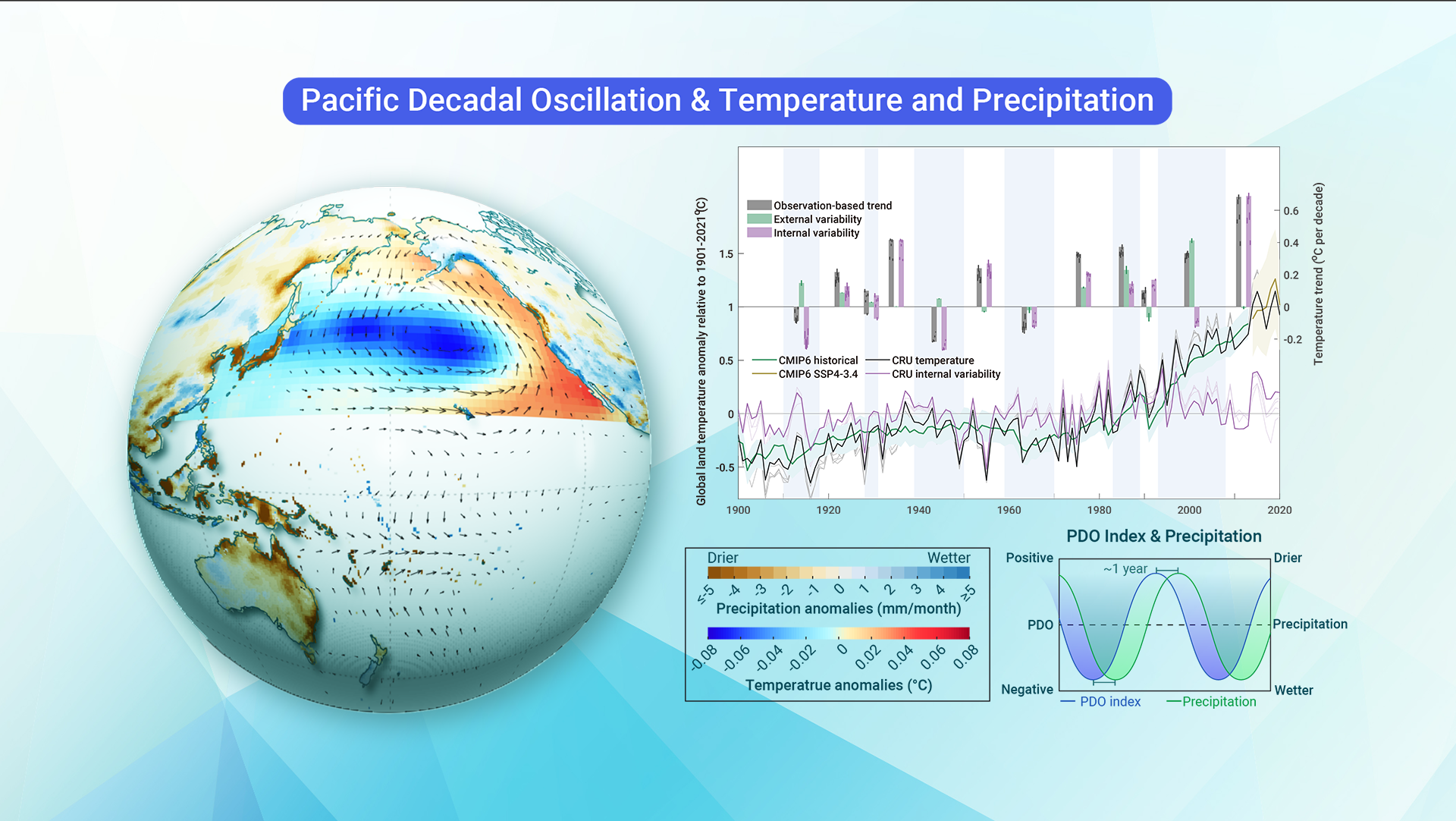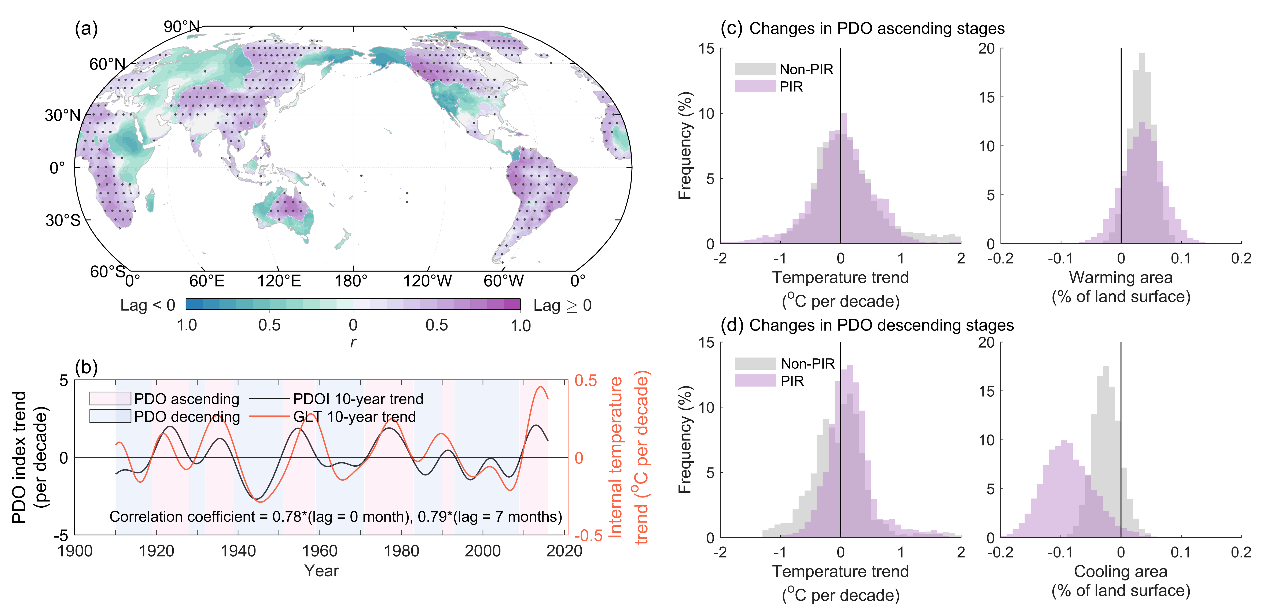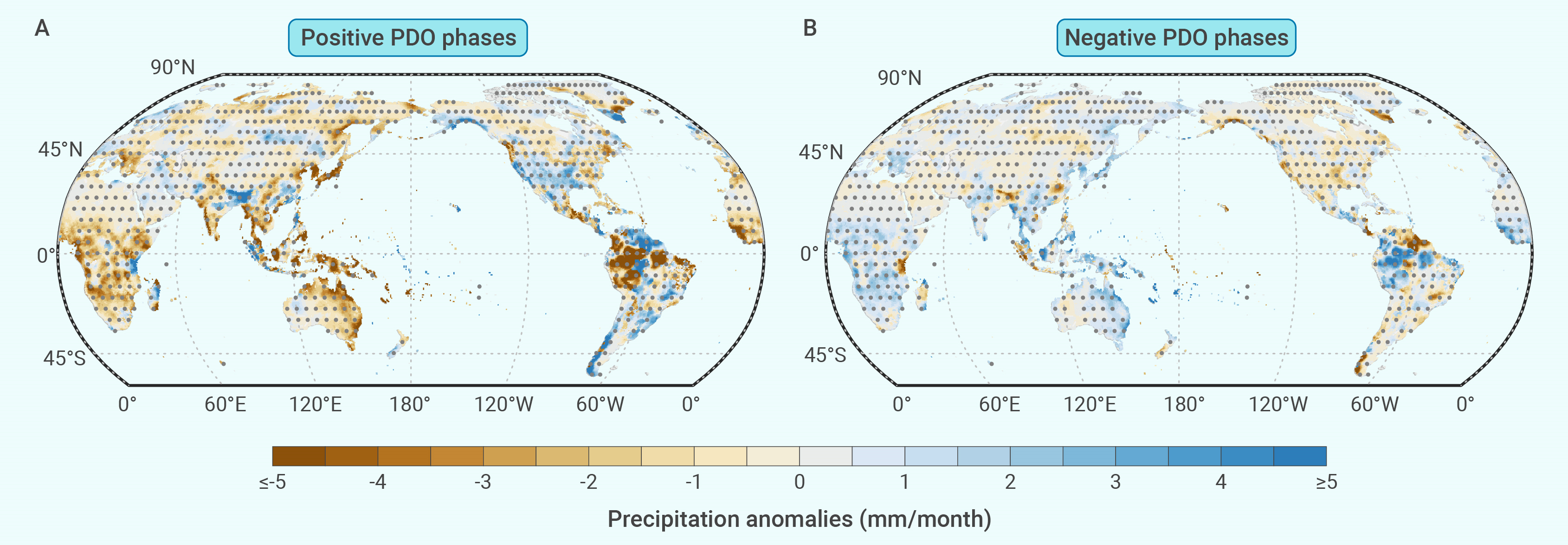The Pacific Decadal Oscillation (PDO) plays a pivotal role in shaping global temperature and precipitation patterns over the span of decades. Despite its recognized influence, there exists a gap in understanding the nuanced and time-evolving impact of the PDO on global land temperature and precipitation. Against the backdrop of this year’s unprecedented record-high sea surface temperatures, it becomes imperative to delve into the intricate dynamics of oceanic conditions and their potential ramifications for the trajectory of global warming.

Associate Professor Zhenzhong Zeng’s research group from the School of Environmental Science and Engineering (ESE) at the Southern University of Science and Technology (SUSTech) has conducted studies on the effect of the PDO on the long-term changes of climate elements.
Their works, entitled “Lagged effect of the Pacific Decadal Oscillation on decadal variation in global land precipitation” and “Changing footprint of the Pacific Decadal Oscillation on global land surface air temperature”, have been published in The Innovation Geoscience and Science Bulletin, respectively.
The PDO is the dominant SST mode in the North Pacific Ocean, reflecting changes in sea surface temperature and atmospheric pressure. The PDO has an approximate cycle of 20 to 30 years, with alternating positive and negative phases, and has profound impacts on the Pacific region and the global climate system. For example, previous studies have found that the global warming hiatus has been linked to the PDO in a negative phase. However, the extent of the PDO’s impact footprint on land temperatures has not been determined, and how this impact changes over time remains unknown.
This study used global land temperature reanalysis data since 1901 to quantify the extent of the PDO impact and its effect on changes in the rate of warming. The researchers found that since the beginning of the 20th century, the acceleration of warming in the regions associated with the transition from the negative to the positive phase of the PDO has been relatively high, and the warming regions have been expanding. At the same time, the cooling effect (offsetting anthropogenic warming) of the PDO phase transition from the positive to the negative phase is shrinking on a global scale. This change implies that the next negative to positive phase transition of the PDO will bring about a period of rapid global warming.

Figure 1. Relationship between the PDO index and global land temperature and its variability
The significant impact of PDO on the climate system is also reflected in precipitation. The researchers discovered that there is a significant lag effect of global land-averaged precipitation on changes in the PDO.
During the positive phase of the PDO, the eastern North Pacific experiences above-average sea surface temperatures (SSTs) and a horseshoe-shaped relative cold in the center. This persistent SST anomaly has an effect on the atmospheric circulation, creating large eddies in the North Pacific region. These atmospheric eddies, usually combined with temperature-dependent sea surface pressure, transport large amounts of water vapor from low-pressure to high-pressure areas to carry rainfall. Conversely, the atmosphere is relatively dry from high-pressure areas to low-pressure areas. This continuous ocean-atmosphere interaction creates positive feedback and atmospheric eddies, which in turn influence land precipitation patterns. This process takes some time to materialize and is the main reason for the lag. Overall, precipitation shows a delayed response of about one year to changes in the PDO. The study also uses a statistical causality i.e., PDO leads to changes in precipitation through the information flow approach.

Figure 2. Spatial patterns of lagged precipitation anomalies over land at different PDO phases from 1901-2021
This study focuses on the quantitative description of SST changes over long periods of time, particularly in the North Pacific Ocean, concerning temperature and precipitation lags, and aims to advance the understanding of global warming and the water cycle. It also aims to contribute to more accurate predictions of climate change in the future.
Lili Liang, a master’s student from the School of ESE at SUSTech, is the first author of both papers. Assoc. Prof. Zhenzhong Zeng is the corresponding author, and SUSTech is the first affiliated unit.
The co-authors include Shijing Liang, Dr. Dashan Wang, and Dr. Rongrong Xu from SUSTech, Prof. Laurent Li from Laboratoire de Météorologie Dynamique, Prof. Philippe Ciais from Laboratoire des Sciences du Climat et de l’Environnement, Prof. Alan D. Ziegler from Maejo University, Prof. Deliang Chen from the University of Gothenburg, and Prof. Huiling Yuan from Nanjing University.
These studies were supported by the National Natural Science Foundation of China (NSFC), Start-Up Fund of SUSTech, Guangdong Provincial Key Laboratory of Soil and Groundwater Pollution Control, Guangdong Basic and Applied Basic Research Foundation, and Swedish Formas. The researchers also acknowledge the support of the Center for Computational Science and Engineering at SUSTech for providing computing resources.
Paper links:
Science Bulletin: http://dx.doi.org/10.1016/j.scib.2023.12.004
The Innovation Geoscience: https://www.the-innovation.org/article/doi/10.59717/j.xinn-geo.2023.100034
To read all stories about SUSTech science, subscribe to the monthly SUSTech Newsletter.
Proofread ByAdrian Cremin, Yingying XIA
Photo BySchool of Environmental Science and Engineering